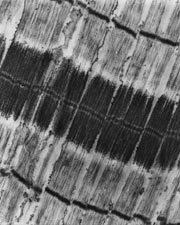

Bernhard H. Bressler
Professor Emeritus
PhD Physiology, University of Manitoba (1972)
MSc Anatomy, University of Manitoba (1968)
Email: bernie.bressler@ubc.ca
Office: 604-875-5641
Research Interests
The objective of our research program is to provide new information about the fundamental mechanisms for force production in skeletal muscle. Experiments are designed to test some fundamental assumptions of the cross-bridge model as well as the role of the protein troponin C in the regulation of calcium sensitivity in striated muscle.
Part of our research is designed to explore how the level of activation of skeletal muscle is controlled by the calcium binding properties of troponin C – the protein responsible for the initiation of muscle contraction. Troponin C has long been associated with the role of an on/off switch which turns a muscle ‘on’ by binding calcium or ‘off’ when it releases calcium. We have found that a shift in the balance between calcium being bound or unbound produces a dramatic drop in the maximal levels of tension development. A measurable change in the rate at which tension develops is also observed with this shift in calcium affinity. These preliminary experiments suggest a potential role for TnC on cross-bridge function. The TnC project is only one of a series of projects designed to study the mechanical properties of cross-bridges.
Slawnych, M.P., L. Morishita, and B.H. Bressler (1996). Spectral analysis of muscle fiber images as a means of assessing sarcomere heterogeneity. Biophys. J. 70:38-47.
Seow, C.Y., L. Morishita, and B.H. Bressler (1998). Milrinone inhibits contractility in skinned skeletal muscle fibers. Am. J. Physiol. 274 (Cell Physiol. 43) C1306-C1311.

Transmission electron micrograph of one sarcomere in a psoas muscle.